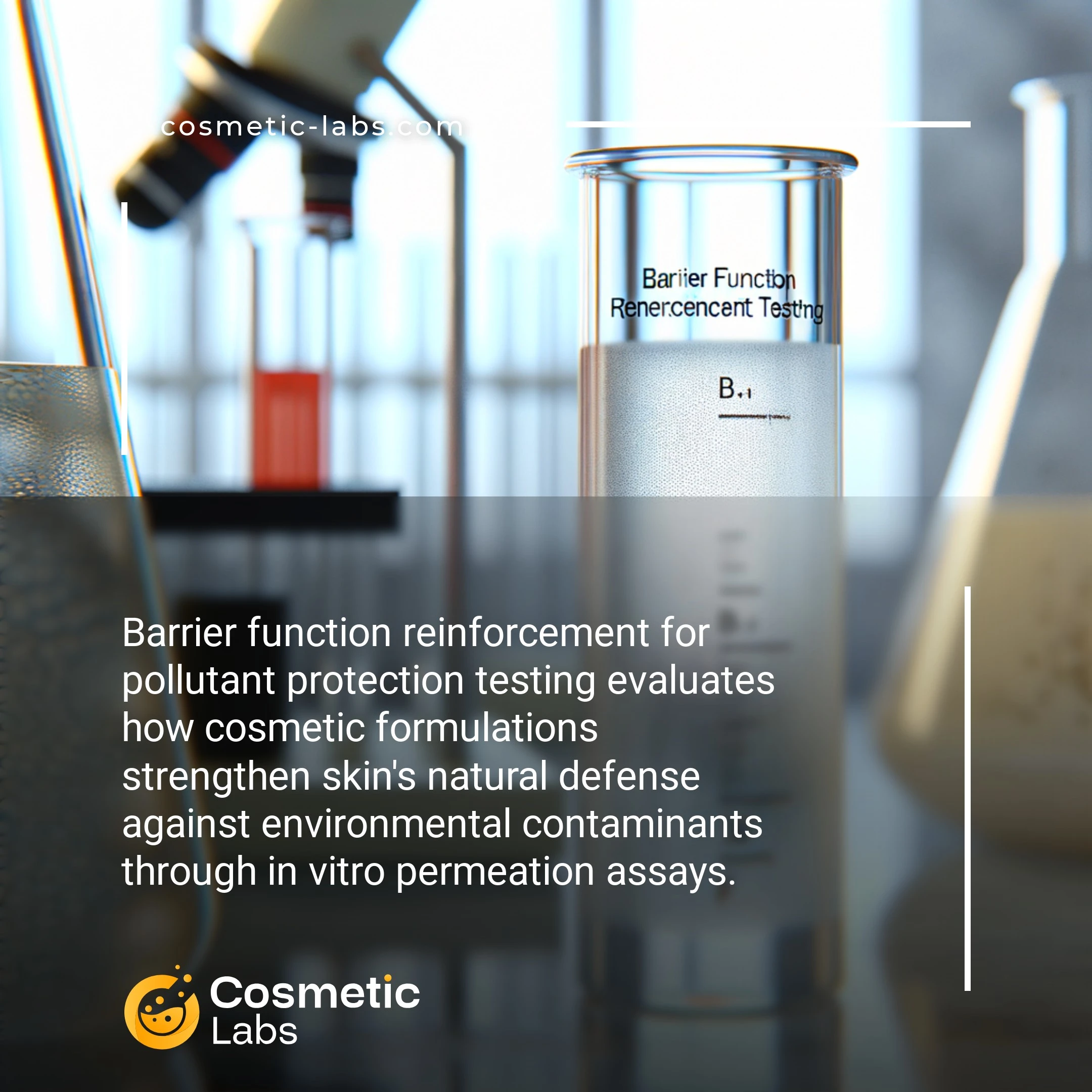Barrier Function Testing Services for Pollutant Protection

What is Barrier function reinforcement?
Barrier function reinforcement testing for pollutant protection evaluates how cosmetic formulations strengthen skin’s natural defense mechanisms against environmental contaminants like PM2.5 particles and urban dust. Labs measure transepidermal water loss reduction and assess stratum corneum integrity using specialized assays that simulate real-world exposure conditions, helping brands validate anti-pollution claims with concrete data.
Why do you need this service?
Cosmetic labs use barrier function reinforcement testing to validate anti-pollution serums and urban defense formulations before market launch. Teams measure how well active ingredients like niacinamide and ceramides strengthen skin’s protective barrier against PM2.5 particles and environmental toxins. This testing proves your formulation’s efficacy claims with quantifiable barrier improvement data that supports marketing messages and regulatory submissions.
Who provides Barrier function reinforcement services?
All cosmetic labs providing Barrier function reinforcement services
There is no company providing these services at the moment.
Barrier Function Reinforcement Testing for Pollutant Protection
Barrier function reinforcement testing validates how well cosmetic formulations strengthen the skin’s natural protective mechanisms against environmental pollutants. Labs on our platform run specialized assays to measure stratum corneum integrity, transepidermal water loss, and cellular defense responses after exposure to urban pollutants like particulate matter and ozone.
Skin Permeability and Integrity Assessment
Testing facilities measure barrier function through multiple methodologies that track skin permeability changes. Transepidermal water loss (TEWL) measurements show how effectively products prevent moisture loss during pollutant exposure. Labs also run dye penetration studies and electrical impedance tests to quantify barrier strength.
Key testing parameters include:
- TEWL rates before and after treatment
- Corneocyte cohesion measurements
- Lipid bilayer organization analysis
- pH buffering capacity assessment
Cellular Defense Mechanism Evaluation
Advanced labs test how formulations activate the skin’s natural detoxification pathways. They measure antioxidant enzyme activity, inflammatory marker expression, and DNA damage repair mechanisms in response to pollutant challenges. In vitro models using reconstructed human epidermis provide reliable data on cellular protection levels.
Testing protocols examine:
- Glutathione and catalase enzyme activity
- Cytokine production patterns
- Oxidative stress biomarkers
- Cell viability after pollutant exposure
Connect with specialized labs on our platform to validate your barrier-strengthening formulations with proven testing protocols that meet regulatory standards.
Practical Applications of Barrier Function Reinforcement Testing for Pollutant Protection
Cosmetic labs use barrier function reinforcement testing for pollutant protection to validate how formulations defend skin against environmental aggressors while maintaining healthy barrier integrity.
Anti-Pollution Skincare Product Development
Labs evaluate how serums, creams, and protective formulations create defensive barriers against particulate matter, heavy metals, and oxidative stress. Testing protocols measure transepidermal water loss (TEWL) before and after pollutant exposure to quantify barrier strengthening effects.
Product developers use these results to optimize concentrations of protective ingredients like ceramides, niacinamide, and antioxidant complexes. Testing typically spans 24-72 hours with standardized pollution exposure chambers that simulate urban environmental conditions.
Urban Defense Cosmetic Formulation Validation
Brands targeting city-dwelling consumers rely on barrier function testing to substantiate claims about pollution defense and skin detoxification. Labs use fluorescent particle tracking and impedance measurements to assess how well formulations prevent pollutant penetration into skin layers.
These tests help validate marketing claims while identifying optimal application methods and reapplication schedules. Results inform product positioning and consumer education about protective benefits in high-pollution environments.
| Testing Method | Measurement Focus | Typical Duration | Key Metrics |
|---|---|---|---|
| TEWL Analysis | Barrier integrity | 24-48 hours | Water loss reduction % |
| Particle Penetration | Pollutant blocking | 6-12 hours | Penetration depth (μm) |
| Impedance Testing | Barrier resistance | Real-time | Electrical conductivity |
| Oxidative Stress | Antioxidant protection | 2-4 hours | ROS reduction levels |
Connect with specialized cosmetic labs on our platform to access barrier function testing services that validate your pollutant protection formulations and support your product development goals.
